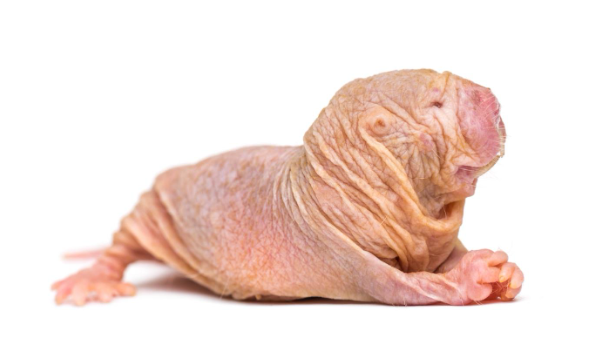Digging for Cures: Naked Mole Rats and the Anti-Aging Puzzle
Photo credit: iStock.com/GlobaIP
Despite their elderly appearance, naked mole rats do not seem to age like us. These unique creatures have an impressive average lifespan of up to 30 years. This longevity stands in stark contrast to most other rodents, which typically survive up to 5 years. Moreover, naked mole rats develop far fewer cancers and other age-related diseases. Their extended health and lifespan challenges conventional notions of aging in mammals, making it a subject of considerable interest and investigation. So how do naked mole rats age so gracefully? One piece to their anti-aging puzzle is that their thymus works for a much longer portion of their lives compared to humans.
The thymus is an essential organ located above the heart, responsible for generating the immune cells required to protect us from threats. Some types of threats include infection by viruses and bacteria, self-destruction of our own healthy tissue (autoimmunity), and uncontrollable growth of our own body’s cells (cancer). As we age the thymus shrinks in size, reducing the production of new immune cells and leading to increased risk of infection, autoimmunity, and cancer. One reason that naked mole rats age well may be because they have discovered a way to slow thymic aging.
So how do naked mole rats keep their thymus working longer? One leading theory is that, unlike humans, naked mole rats have adapted to lower their cell stress. Cell stress occurs as we age because we accumulate damage in our body and cells. A little damage here and there is no problem; our cells can handle themselves to a certain point. However, once a cell accumulates too much damage, it triggers a stress response, and the cell tries to restore balance. If a cell fails to do so, they could change their behavior. This is one of the reasons why cancer risk increases with age.
When stressed, thymic cells cannot do their job to keep us healthy. But what exactly do thymic cells do? Healthy thymic cells help create T cells, a type of immune cell. Each T cell is unique to help fight an infinite variety of viruses, bacteria, or other invaders we may encounter in life. To develop a variety of T cells, thymic cells must generate a TON of proteins, making them one of the highest protein-producing cells in the body. But having too many proteins at once makes cells stressed. Therefore, thymic cells are walking on a tightrope. They need to make lots of proteins to help create a vast number of T cells, but they must also keep themselves clean and organized. If thymic cells become stressed, they begin to change their behavior. They are no longer able to support T cell development, reducing the number of unique T cells. Fewer unique T cells makes us vulnerable to diseases because we have less T cells to recognize them and mount a defense.
Scientists are actively trying to figure out how to counter thymic stress and restore thymic function. Unlike humans, naked mole rats have lower thymic stress, decreasing their risk of cancer and other age-related diseases. Scientists are working to understand the biology of naked mole rats to help design therapeutic interventions for us. So, the cure to living longer, healthier lives may be buried deep underground with our cute wrinkly friends, the naked mole rats.
Emma Lederer is a second-year immunology graduate student at the University of Washington and researcher in the Dudakov Lab at Fred Hutchinson Cancer Research Center. She works to develop therapeutics to improve thymic function as we age to decrease our chances of cancer, autoimmunity, and infection.


